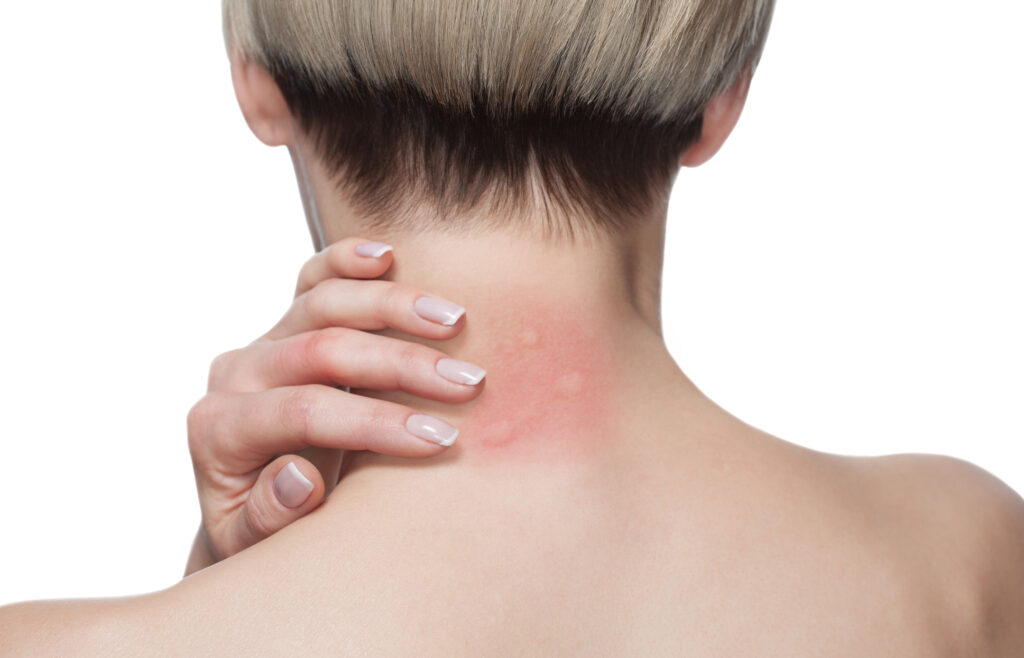What’s That Rash?

It happens to everyone at some point or another. Suddenly, you notice that a mysterious rash has appeared somewhere on your body. What is that? More importantly, what caused the rash, and what can you do about it?
Rashes are abnormal changes in the color or texture of the skin. They’re often the result of skin inflammation, but they can have many different causes. In fact, there are many different types of rashes.
- Dermatitis is a term that covers a variety of rashes. For example, atopic dermatitis is eczema, contact dermatitis is an allergic reaction or reaction to an irritant that results in a painful, itchy skin rash, and seborrheic dermatitis is dandruff or cradle cap. Dermatitis is not contagious, and it can be caused by a variety of factors, including immune system issues, genetics, environmental factors, and exposure to irritants.
- Some rashes are caused by illness. Psoriasis and rosacea are two examples of ailments that manifest in rashes. Lupus, rheumatoid arthritis, and Kawasaki disease all cause rashes, and many viruses can cause a rash as well, including rubella, mononucleosis, roseola, hand, foot, and mouth disease, fifth disease, the Zika virus, and COVID-19. Shingles is caused by a virus called herpes zoster.
- The measles and chickenpox cause distinctive rashes. Measles and chickenpox are also rash-causing viruses, and the rashes they cause are very different. Chickenpox starts with red, raised bumps that then turn into itchy, fluid-filled blisters that rupture, leak, and scab over. Measles, on the other hand, typically looks like flat, red spots. Sometimes raised bumps appear, but they don’t contain fluid. Measles spots start to run together as the rash spreads.
- A rash can sometimes be the result of a bug bite or a sting. Bedbugs and chiggers are parasites that cause rashes, and the bites fleas can look like a rash. A bee sting causes a rash and swelling and, in people who are allergic, the sting of a wasp, bee, yellow jacket, or hornet can cause skin rashes or hives, along with other symptoms like swelling, dizziness, rapid pulse, and difficulty breathing and swallowing.
- Fungal and bacterial infections can cause rashes. Impetigo, for example, is a contagious bacterial infection that presents as a rash. Cellulitis and MRSA are rashes that, if left untreated, can result in serious consequences. Athlete’s foot and ringworm are two examples of fungal rashes.
So, if you’ve got a rash, what can you do? There are over the counter medications that sometimes work. If you know what kind of rash it is, you might try an anti-fungal or anti-itch medication or a corticosteroid cream. Sometimes, however, you need the help of a dermatologist.
If you’ve got a rash that needs attention, make an appointment with Swinyer-Woseth Dermatology. We’re committed to providing superior, professional skin care in a manner that’s practical, efficient, and compassionate. With over 30 years of experience providing dermatological services in Salt Lake City, we provide a variety of services, from cosmetic skincare to treatment for skin cancer. Our team of board-certified dermatologists and licensed cosmetic service providers are here to provide you with the care you need in a comfortable, professional atmosphere. Call (801) 682-4715 or contact us through our website.
